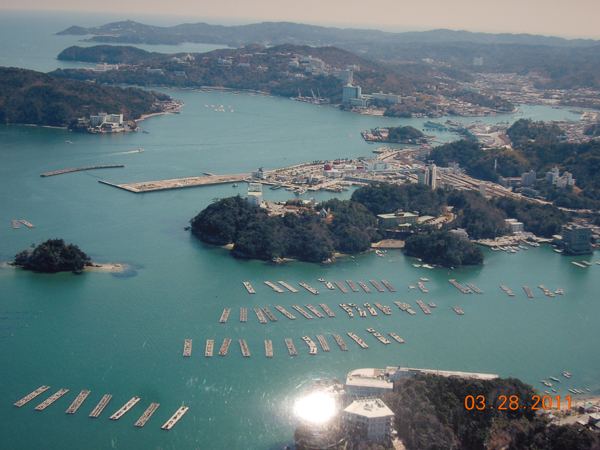- Tree Tachibana | Population 19,227 (Aug 2015) | |
 | ||
Weather 10°C, Wind N at 11 km/h, 73% Humidity Points of interest | ||
Ronku t shi t shi jima toba mie japan
Toba (鳥羽市, Toba-shi) is a city located in Mie Prefecture, Japan.
Contents
- Ronku t shi t shi jima toba mie japan
- Map of Toba Mie Prefecture Japan
- Geography
- Neighboring municipalities
- History
- Railway
- Highway
- Ferry
- Economy
- Education
- Local attractions
- Sister city relations
- Noted people from Toba
- References
Map of Toba, Mie Prefecture, Japan
As of August 2015, the city had an estimated population of 19,227 and a population density of 179 persons per km2. The total area was 107.34 square kilometres (41.44 sq mi).
Geography
Toba is located on the northern half of Shima Peninsula in far eastern Mie Prefecture, facing Ise Bay of the Pacific Ocean. The area is famous for oysters and for cultured pearls. Much of the city is within the borders of the Ise-Shima National Park.
Toba administers numerous islands in the Ise Bay, the most important of which are:
Neighboring municipalities
Mie Prefecture
History
The area of modern Toba has been continuously inhabited since before the Jomon period. During the Sengoku period, the area was under the control of pirates, from whom emerged Kuki Yoshitaka (from Nakiri district) as a dominant ruler. After having dominated the local seacoasts, he established Toba as his capital and built a castle there. Under the Tokugawa shogunate, the castle became the center for Toba Domain.
In the Edo period, Toba flourished in trade and as a transshipment port between Osaka and Edo. The modern city of Toba was formed on November 1, 1954, by the merger of the town of Toba with five villages in Shima District.
Railway
Highway
Ferry
Economy
Commercial fishing and cultivated pearls, together with tourism, form the backbone of the local economy.
